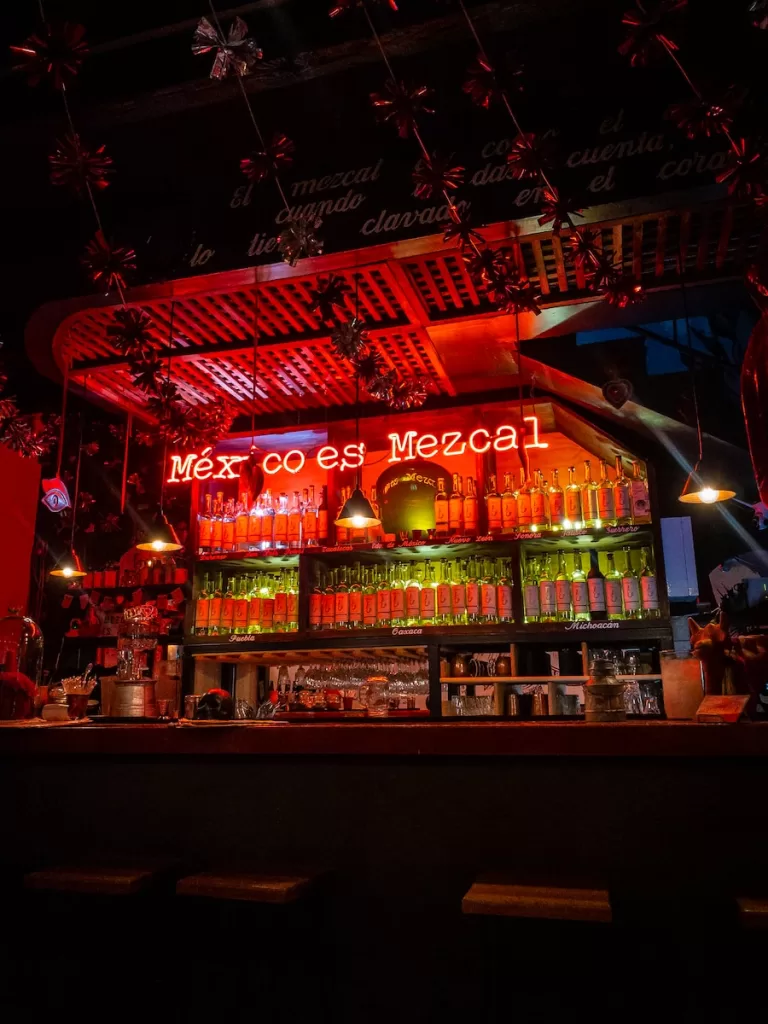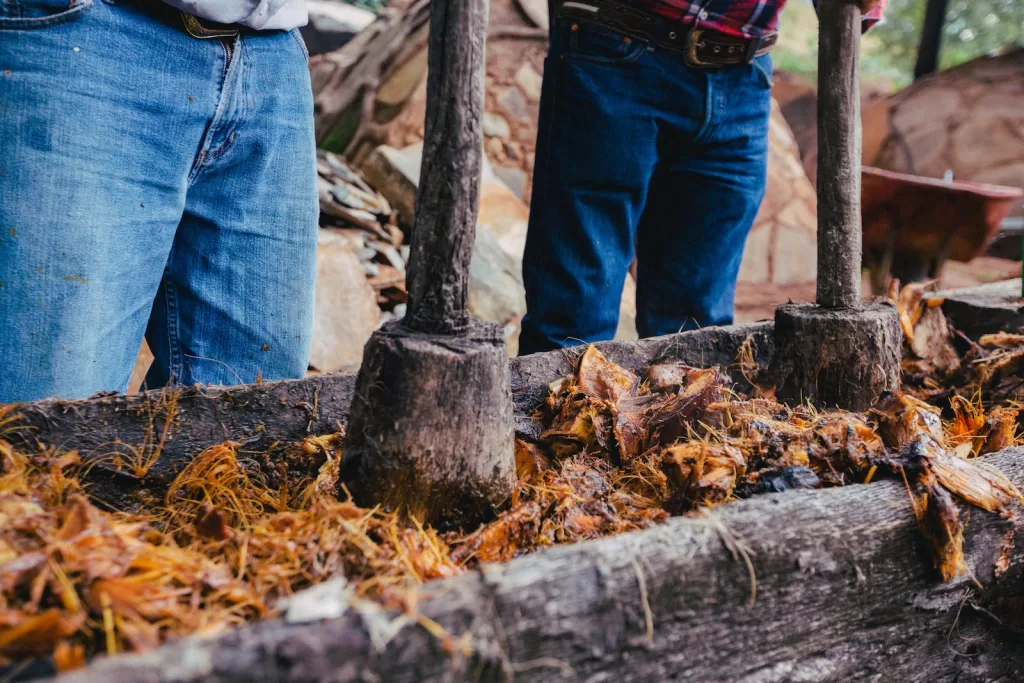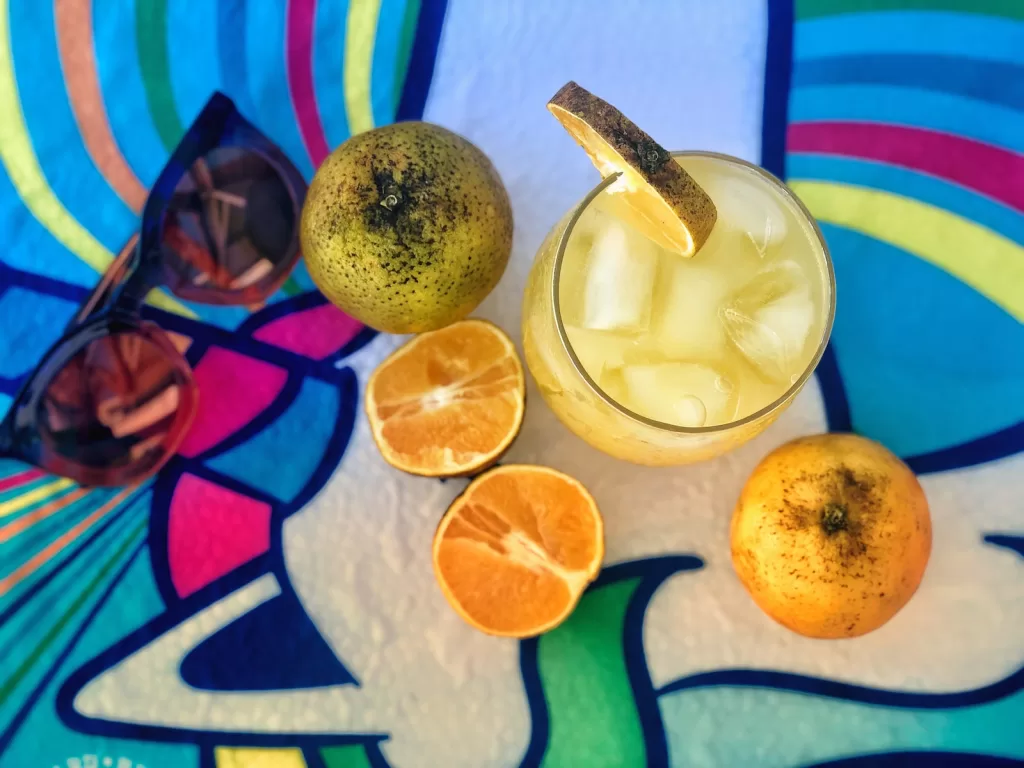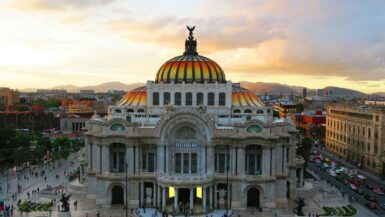
Let’s talk Mezcal vs Tequila. When it comes to Mexican spirits, mezcal and tequila are undoubtedly the most famous. They share similarities, but these two agave-based liquors also possess key distinctions that set them apart. In this comprehensive article, we will explore the world of mezcal vs. tequila, delving into their history, production methods, flavor profiles, and more.
- 1. Origins of Mezcal and Tequila
- 2. Geographical Designations
- 3. Agave Varieties and Harvesting
- 4. Production Methods: Mezcal vs Tequila
- 5. Flavor Profiles: Comparing Mezcal and Tequila
- 6. Aging and Classification
- 7. The Role of Worms in Mezcal and Tequila
- 8. Popular Cocktails Featuring Mezcal and Tequila
- 9. Health Benefits and Alcohol Content
- 9.3 Legal Drinking Age in Mexico
- 10. Mezcal vs Tequila: A Matter of Personal Taste
- 11. Best Tequila Tasting Mexico City
- FAQ – Mezcal vs Tequila: Understanding the Differences
1. Origins of Mezcal and Tequila
1.1. The Ancestral Roots of Mezcal
Mezcal is an ancient spirit, with its origins dating back hundreds of years to the indigenous people of Mexico. The word “mezcal” is derived from the Nahuatl words “metl” and “ixcalli,” which together mean “oven-cooked agave.” This hints at the traditional production methods that are still used today for crafting this unique beverage.
1.2. The Birth of Tequila
Tequila, on the other hand, is considered a more recent creation, with its origins traced back to the 16th century. Some experts believe that tequila is actually a type of mezcal, as both spirits are created from agave plants. However, tequila is exclusively produced using the Blue Weber Agave plant, while mezcal can be made from any of the numerous agave species.
2. Geographical Designations
2.1. The Mexican States of Mezcal and Tequila Production
Both mezcal vs tequila are protected by a Designation of Origin (DO), which means they must be produced in specific regions of Mexico to be considered authentic. Tequila can only be made in the states of Jalisco, Guanajuato, Michoacan, Nayarit, and Tamaulipas. Mezcal, conversely, is primarily produced in the states of Oaxaca, Guerrero, Durango, San Luis Potosi, and Zacatecas.
2.2. The Impact of Terroir
The distinct geographical regions where mezcal and tequila are produced greatly influence their flavor profiles. The terroir, which includes factors such as soil composition, climate, and altitude, plays a significant role in shaping the characteristics of the agave plants used to make these spirits. As a result, mezcal and tequila each boast unique flavors that are deeply rooted in their respective regions.
3. Agave Varieties and Harvesting
3.1. Blue Weber Agave: The Sole Ingredient of Tequila
Tequila is made exclusively from the Blue Weber Agave plant (Agave tequilana). This agave species is native to Mexico and thrives in the volcanic soils found in the tequila-producing regions. The plants are harvested by hand when they reach maturity, which usually occurs between seven and ten years.
3.2. The Wide Variety of Agave in Mezcal Production
Mezcal, conversely, can be made from a vast array of agave species, with over 40 different types used in its production. Some of the most common agave varieties found in mezcal include Espadin, Tobala, Cupreata, and Madrecuixe. The diverse agave species used in mezcal contribute to the extensive range of flavors and aromas found in this spirit.
4. Production Methods: Mezcal vs Tequila

4.1. Traditional Mezcal Production
One of the most significant differences between mezcal and tequila lies in their production methods. Mezcal is typically produced using traditional techniques that have been passed down through generations. The heart of the agave plant, known as the piña, is roasted in earthen pits lined with hot stones, which imparts the signature smoky flavor that mezcal is known for. After roasting, the piñas are crushed, fermented, and distilled to create the final product.
4.2. The Modern Tequila Process
Tequila production, in contrast, employs more modern methods. The Blue Weber Agave piñas are steamed rather than roasted, usually in brick ovens or autoclaves. This cooking method results in a cleaner, more consistent flavor that is less smoky compared to mezcal. After steaming, the piñas are crushed, fermented, and distilled, similarly to mezcal.
5. Flavor Profiles: Comparing Mezcal and Tequila
5.1. The Distinctive Taste of Mezcal
Mezcal is known for its complex and diverse flavor profile, which can vary greatly depending on the agave species used and the production techniques employed. The most notable characteristic of mezcal is its smokiness, which comes from the traditional pit-roasting method. Additionally, mezcal can exhibit earthy, fruity, and herbal notes, with some varieties even showcasing spicy or floral flavors.
5.2. The Signature Flavors of Tequila
Tequila, on the other hand, boasts a more consistent and recognizable flavor profile. Due to its exclusive use of Blue Weber Agave and more standardized production methods, tequila typically exhibits a clean and crisp taste with notes of pepper, citrus, and sometimes vanilla. The flavors of tequila are less diverse than those of mezcal but are still rich and nuanced.
6. Aging and Classification
6.1. Tequila Aging Categories
Tequila is classified into different categories based on its aging process. The three primary categories are:
- Blanco or Silver Tequila: This is unaged tequila, bottled immediately after distillation.
- Reposado Tequila: This tequila is aged in oak barrels for a period of two months to one year, resulting in a golden color and additional flavors from the wood.
- Añejo Tequila: Aged for at least one year, añejo tequila has a darker hue and a more pronounced flavor profile, often showcasing notes of caramel, oak, and vanilla.
6.2. Mezcal Aging Categories
Mezcal also has various classifications based on aging, although the distinctions are less rigid than tequila:
- Joven or Young Mezcal: This is unaged mezcal, similar to blanco tequila.
- Reposado Mezcal: Aged in wooden barrels for a period of two months to one year, reposado mezcal acquires a caramel color and additional flavors from the wood.
- Añejo Mezcal: This mezcal is aged for at least one year and shares similar characteristics with añejo tequila, such as a darker color and more complex flavors.
7. The Role of Worms in Mezcal and Tequila
A common misconception is that all mezcal and tequila bottles contain a worm. In reality, the “worm” is actually a moth larva called Hypopta agavis that feeds on agave plants. The larva is occasionally found in mezcal bottles but is not present in tequila. The inclusion of the larva in some mezcals is said to enhance the flavor and provide a unique characteristic to the spirit.
8. Popular Cocktails Featuring Mezcal and Tequila
Mezcal and tequila are both celebrated for their versatility in creating a wide array of cocktails. Some popular tequila-based cocktails include the Margarita, Paloma, Tequila Sunrise, and Tequila Sunset. Mezcal, with its smoky and complex flavor profile, is often incorporated into innovative and creative concoctions, such as the Mezcal Negroni, Mezcal Mule, and Smoky Paloma.

9. Health Benefits and Alcohol Content
9.1. Alcohol Content Comparison
In general, mezcal tends to have a higher alcohol content compared to tequila, with some varieties reaching up to 55% alcohol by volume (ABV). Tequila typically has a more standard ABV of around 40%.
9.2. Potential Health Benefits
Moderate consumption of both mezcal and tequila has been associated with certain health benefits, such as lowering cholesterol levels and reducing inflammation. However, it is essential to consume these spirits responsibly and in moderation to avoid any adverse health effects.
9.3 Legal Drinking Age in Mexico
In Mexico, the legal drinking age is 18, reflecting a balance between cultural traditions and responsible consumption.
10. Mezcal vs Tequila: A Matter of Personal Taste
Ultimately, the choice between mezcal and tequila comes down to personal preference. For those who enjoy a smoky, complex, and artisanal spirit, mezcal is the perfect choice. If a cleaner, more consistent, and perhaps more familiar flavor is desired, tequila is the way to go. Regardless of your preference, both mezcal and tequila offer a unique and enjoyable tasting experience, deeply rooted in the rich history and traditions of Mexico.
11. Best Tequila Tasting Mexico City

If you’re a tequila lover like me, then Mexico City is the ultimate destination for you! Known for its rich history and vibrant culture, this city is also home to some of the best tequila tasting experiences in the world. From traditional distilleries to trendy bars, there are endless options to indulge in the flavors of tequila and mezcal. Whether you’re a seasoned connoisseur or just discovering the magic of this iconic Mexican spirit, a tequila tasting in Mexico City is an absolute must-do.
- Teotihuacan Early Access tour with Tequila Tasting
- Mexico City at Night: Cantinas, Lucha Libre & Mariachi
- Teotihuacan Afternoon and Tequila Tasting Tour
- A Taste of Mexico City: Private Tour
One of the highlights of visiting Mexico City is the opportunity to drink tequila straight from the source. Many distilleries in and around the city offer guided tours where you can learn about the production process and sample different varieties of tequila. From the smooth and earthy blanco to the rich and complex añejo, each sip tells a story of craftsmanship and tradition. The knowledgeable guides will take you through the history and nuances of tequila, leaving you with a newfound appreciation for this beloved spirit. However, Mexico City also has a thriving bar scene where you can partake in tequila tastings conducted by knowledgeable mixologists, so it’s not just about the distilleries. These talented individuals will take you on a journey through different tequila cocktails, showcasing the versatility of this spirit.
From classic margaritas to innovative concoctions, every sip is a burst of flavor that will leave you wanting more. So grab your friends, sit back, and let the magic of tequila transport you to a world of excitement and deliciousness. In conclusion, if you’re looking for the best tequila tasting experience, look no further than Mexico City. With its abundance of distilleries and bars, this vibrant city offers endless opportunities to indulge in the flavors of tequila and mezcal. Whether you choose to visit a traditional distillery or explore the trendy bar scene, each sip will take you on a journey through Mexican culture and tradition. So raise your glass and toast to an unforgettable tequila tasting in Mexico City!
FAQ – Mezcal vs Tequila: Understanding the Differences
What Is The Difference Between Mezcal And Tequila?
- Mezcal can be produced from various agave species, while Tequila is exclusively made from the blue agave plant in specific regions of Mexico.
- Mezcal is typically cooked in underground pits, giving it a smoky flavor. Tequila is typically steamed, resulting in a smoother flavor.
- Mezcal can be made in any of Mexico’s 31 states, while Tequila can only be made in five specific states: Jalisco, Guanajuato, Michoacán, Nayarit, and Tamaulipas.
Is The Buzz The Same For Mezcal And Tequila?
- The buzz or effects of Mezcal and Tequila can be similar since they are both alcoholic beverages. However, individual experiences may vary depending on factors such as alcohol content, personal tolerance, and consumption amount.
- Mezcal typically has a higher alcohol content than Tequila, so the buzz may be more intense.
What Is Mezcal?
- Mezcal is a traditional Mexican spirit that predates Tequila.
- It is made by fermenting and distilling the cooked hearts of agave plants, known as “piñas.”
- Mezcal has a smoky flavor profile due to the underground pit roasting or smoking process used during production.
What Is Tequila?
- Tequila is a specific type of Mezcal produced using only blue agave plants and following specific regulations in designated regions of Mexico, primarily the state of Jalisco.
- It undergoes a different production process and has a more defined flavor profile compared to other Mezcals.
- Tequila is typically clear, but it can also be aged in oak barrels, which gives it a golden color and a smoother flavor.
How Is Mezcal Made Compared To Tequila?
- The production processes for Mezcal and Tequila differ in several ways.
- Mezcal typically involves cooking the agave piñas in earthen pits lined with rocks and covered with soil or agave fibers.
- The cooked piñas are then crushed, fermented, and distilled in clay or copper pots, resulting in the distinctive smoky flavor.
- On the other hand, Tequila’s production involves steaming the blue agave piñas in above-ground ovens before crushing, fermenting, and distilling them in copper stills.





